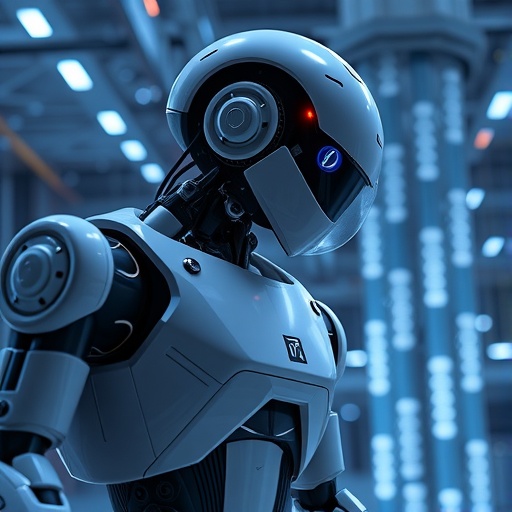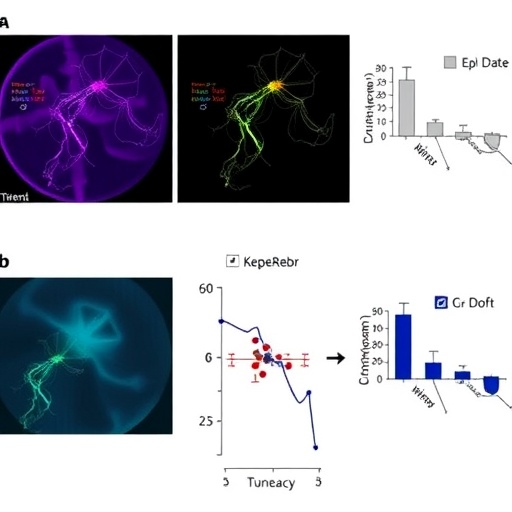In the rapidly evolving landscape of infrastructure maintenance, the advent of intelligent inspection robots marks a transformative milestone. These sophisticated machines are set to revolutionize how we monitor and preserve vital structures such as bridges, tunnels, construction machinery, and offshore platforms. Traditional inspection practices, dominated by manual visual assessments, are fraught with limitations—they are labor-intensive, costly, and pose significant risks to human inspectors, especially when accessing precarious or hazardous environments. Moreover, these conventional methods often fail to detect early-stage structural defects, leaving critical vulnerabilities unnoticed until catastrophic failures occur.
Intelligent inspection robots harness cutting-edge sensor technologies combined with advanced artificial intelligence (AI) algorithms to autonomously assess the health of infrastructure with unmatched speed, accuracy, and safety. By deploying high-resolution imaging systems, LiDAR scanning, ultrasonic sensing, and thermal imaging simultaneously, these robots generate comprehensive datasets that reveal both surface and subsurface anomalies. Their AI-driven processing enables real-time data analysis, allowing for immediate identification of cracks, corrosion, material fatigue, and other forms of structural degradation that conventional inspections might overlook.
One of the pivotal strengths of these robotic systems lies in their diverse mobility platforms tailored to specific environmental challenges. Ground mobile robots are engineered to traverse uneven and complex terrains, making them ideal for inspecting expansive bridge decks, wind turbine blades, and highways. Their design prioritizes stability and endurance, facilitating prolonged inspection missions that gather high-fidelity data over vast surfaces with exceptional reliability.
Complementing ground units, wall-crawling robots employ innovative adhesion mechanisms such as magnetic wheels or suction cups to scale vertical and even inverted surfaces. These robots excel at evaluating the integrity of bridge piers, skyscraper exteriors, and ship hulls—locations typically difficult and dangerous for human inspectors to access. Their capability to meticulously detect cracks, corrosion, and deformations on vertical planes drastically reduces inspection times while enhancing detection precision.
Aerial robots, commonly known as drones, add another dimension to infrastructure inspection by enabling swift deployment over hard-to-reach areas. Equipped with ultra-high-definition cameras and 3D mapping technologies, drones offer extensive coverage and can capture detailed images even in challenging weather or lighting conditions. Their agility allows for inspections of bridge superstructures, crane assemblies, and other elevated components where manual assessments would be cumbersome or unfeasible.
Underwater inspection robots address the challenges of submerged structures, including bridge foundations, dams, and offshore platforms. These autonomous underwater vehicles (AUVs) are specially adapted to withstand harsh aquatic environments and perform precise nondestructive testing. Employing sonar imaging, ultrasonic thickness gauges, and specialized cameras, underwater robots detect erosion, cracks, and biofouling that threaten the structural integrity beneath the waterline.
To bolster the accuracy and reliability of defect detection, modern inspection robots incorporate sophisticated sensor fusion techniques. By integrating multispectral data from heterogeneous sensors, these systems produce richer and more consistent assessments of structural conditions. Furthermore, deep learning algorithms have become instrumental in analyzing the colossal datasets generated during inspections. These AI models are trained to recognize subtle patterns and anomalies indicative of early-stage damage, empowering proactive maintenance strategies.
Navigating complex environments autonomously poses significant technical challenges, especially in GPS-denied or signal-obstructed areas. To overcome this, intelligent inspection robots leverage advanced navigation methodologies such as Simultaneous Localization and Mapping (SLAM), which allows them to construct real-time maps of their surroundings while pinpointing their own location. Additionally, Ultra-Wideband (UWB) positioning enhances spatial awareness in indoor or subterranean environments, ensuring these robots maintain accurate trajectories and coverage without human intervention.
Despite strides in robotic inspection technology, several hurdles remain. Ensuring operational stability amidst varying environmental conditions—such as turbulent water currents, strong winds, or uneven surfaces—requires continuous improvements in mechanical design and adaptive control systems. The real-time processing of complex, multi-modal sensor data demands scalable computational architectures and optimized algorithms that can handle vast data throughput without latency. Achieving full autonomy whereby robots make context-aware decisions independently remains an aspirational goal that requires deeper integration of AI cognition and machine learning.
Future research directions emphasize the fusion of these technologies alongside advances in multi-robot collaboration and energy management. Coordinating fleets of heterogeneous robots promises to drastically increase inspection efficiency and spatial coverage, as tasks can be distributed intelligently according to each robot’s specialized capabilities. Concurrently, innovations in lightweight materials, power management, and battery technologies aim to extend operational endurance and portability, further enabling deployment in remote or difficult locations.
By uniting robotics, advanced sensor systems, and artificial intelligence, intelligent inspection robots are poised to redefine structural health monitoring. This multidisciplinary convergence not only promises to enhance public safety by preempting catastrophic failures but also offers substantial economic benefits through cost-effective maintenance and lifespan extension of critical infrastructure. As these technologies mature, they will become indispensable tools for civil engineers, asset managers, and policymakers seeking smarter, safer, and more sustainable infrastructure management solutions.
The integration of intelligent inspection robots represents a paradigm shift away from reactive repair towards proactive maintenance, enabling data-driven decision-making that safeguards the built environment. Widespread adoption of these autonomous systems will unlock unprecedented operational efficiencies, reduce human risk exposure, and provide detailed analytics that refine engineering models and design standards. As our global infrastructure networks age and face increasing environmental stressors, these robotic sentinels will be critical in preserving their resilience and functionality for generations to come.
Ultimately, the journey toward fully autonomous robotic inspection systems is not only a technical endeavor but a societal imperative. Bridging the realms of mechanical engineering, computer science, and materials science, these innovations embody the future of infrastructure stewardship—where intelligent machines tirelessly guard the safety and durability of the world’s most vital structures.
Subject of Research: Not applicable
Article Title: A Review of Technical Advances and Applications of Intelligent Inspection Robots in Structural Health Monitoring
News Publication Date: 22-Aug-2025
Web References: http://dx.doi.org/10.1002/smb2.70000
References: The authors declare no competing interests
Keywords: Intelligent inspection robots, structural health monitoring, autonomous navigation, sensor fusion, artificial intelligence, structural defects, robotics, infrastructure inspection
Tags: advanced AI algorithms for infrastructureautonomous infrastructure assessmenthigh-resolution imaging in inspectionsintelligent inspection robotsLiDAR scanning for structural integritymobility platforms for inspection robotsreal-time data analysis for maintenancerevolutionizing traditional inspection methodssafety in infrastructure monitoringsensor technologies in constructionstructural health monitoring technologyultrasonic sensing for defect detection





